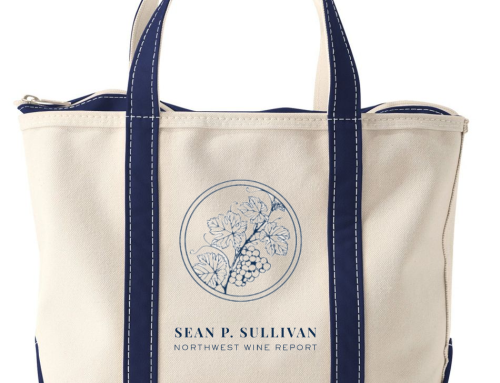The Walla Walla Valley wine scene has been booming since the turn of the new century, with well over 100 tasting rooms and wineries now calling the valley home. Ten years ago as the valley started to garner increasing acclaim, one of the knocks I would hear was that there were few vineyards in the area. While numerous wineries in Walla Walla are still sourcing grapes from across Washington – and many always will – the valley has seen a sharp increase in plantings in the last decade, allowing an increasing number of wineries to source valley fruit for their wines.
The Walla Walla Valley celebrated its 30th anniversary as a federally approved growing region earlier this year. When the appellation was first approved, there were only about 60 acres of grapes planted in the valley according to the petition. By 2002, the valley had 800 acres of grape vines, increasing to 1,300 in 2011. Just three years later that number stands close to 2,000 according to the Walla Walla Wine Alliance.
Looking around the valley, this sudden increase doesn’t seem too surprising. Growers and winemakers are exploring in all directions. To the south there is the ambitious SeVein project at Seven Hills, which includes vineyards from the likes of Doubleback, JM Cellars, L’Ecole No 41, and Figgins Family Wine Estates along with a number of others. The project includes 2,700 total acres of land. The Rocks area is being aggressively planted. People are also beginning to explore the canyons and higher elevation sites of the southern area.
To the east, Charles Smith has plantings off Powerline Road. Blue Mountain Vineyard (the estate vineyard for Tranche Cellars) has substantially increased its plantings in recent years and is working with a large number of different varieties. Further east still, the Reynvaan Family Vineyards has plantings in the foothills of the Blue Mountains and now has released wines from this site. Meanwhile the Figgins family and others explore the Upper Mill Creek drainage.
A number of projects are also taking place to the north. Spring Valley Vineyard has long had plantings north of Highway 12 but has had few neighbors. In 2009, however, Precept Wines planted the 140-acre Waterbrook Estate Vineyard on land originally homesteaded by Uriah Corkrum. The vineyard had its first harvest in 2012. Others are beginning to explore this northern region of the valley as well.

“I believe the north side of the Walla Walla Valley has yet to see the greatest potential for vineyard expansion,” Wylie said. “A large percentage of the Éritage property is comprised of silt-loam hilltops and ridge crests with gentle south facing slopes providing excellent cold air drainage. Because of its position in the hilly terrain north of the floor of the Walla Walla Valley, the property experiences warmer daytime low temperatures and has less diurnal variation than sites on the valley floor.” The first plantings of Cabernet Sauvignon, Merlot, Cabernet Franc, Malbec, and Syrah will take place in spring of 2014.
Whatever ends up happening with this and other projects in the valley, it’s clear that the Walla Walla Valley is changing. It is no longer just a home for wineries and tasting rooms but is also indisputably home to numerous first class vineyards. And just as the Walla Walla Valley looks radically different now than it did ten years ago, it will also look different again ten years from now as the area’s boom continues. It will be fun to watch it all unfold.
Pictures courtesy of Éritage Vineyards.
(Below are reviews of recent releases from Va Piano Vineyards.)
Va Piano Cabernet Sauvignon Columbia Valley 2011 $40

Va Piano Syrah Columbia Valley 2010 $40

Va Piano ‘Black Label’ Syrah Porrteus Yakima Valley 2011 $65

Va Piano ‘Black Label’ Syrah Les Collines Walla Walla Valley 2011 $65








Sean,
Doesn't Christophe have a new vineyard somewhere on a hillside? I remember seeing a picture of it that Trey sent me. Can't find it tho!